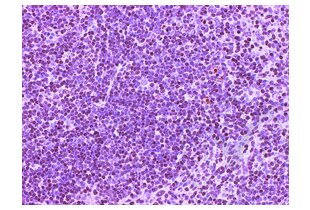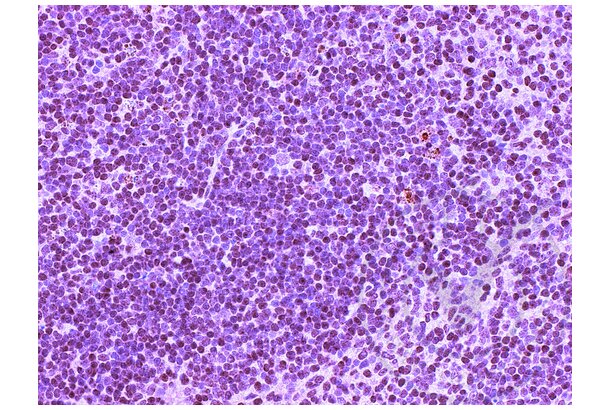CD4 Antibodies
Your search for reliable CD4 antibodies ends here. CD4, known by aliases such as CD4, LOC100125525, cd4, Cd4, is an integral part of our antibody range. Whether you're working with Human, Mouse, Rat, Chicken, Pig, or other species, our range of CD4 antibodies offer precise detection across diverse samples. These specialized antibodies are tailored for various scientific applications like FACS, WB, IHC, IP, ELISA, providing you with options like polyclonal, recombinant, and monoclonal antibodies, sourced from different host species such as Mouse, Rabbit, Rat. The efficacy of our antibodies is well-established, demonstrated through multiple methods.
Detailed information, including references, images, and validations by other customers, can be found on each product page. Should you require assistance in finding a specific product, our customer service team is ready to assist. Utilize our CD4 antibodies in your research endeavors for dependable CD4 detection.

 CD4 antibody (AA 385-457) (ABIN671376)
CD4 antibody (AA 385-457) (ABIN671376)
CD4 Reactivity: Human, Mouse, Rat, Chicken, Pig FACS, WB, ELISA, IHC (fro), IHC (p), IF (cc), IF (p) Host: Rabbit Polyclonal unconjugated
CD4 Reactivity: Human, Mouse, Rat, Chicken, Monkey, Dog, Pig, Cat, Cow, Rabbit, Sheep, Guinea Pig, Goat, Horse, Avian, Donkey, Hamster WB, IHC Host: Goat Polyclonal unconjugated
CD4 Reactivity: Human, Mouse, Rat FACS, WB, ELISA, IHC (fro), IHC (p), IF (cc), IF (p) Host: Rabbit Polyclonal unconjugated
CD4 Antibodies by Grade
Find CD4 Antibodies with a specific Grade. The Grade listed below are among those available. Click on a link to go to the corresponding products.
CD4 Antibodies by Host
Find CD4 Antibodies with a specific Host. The Host listed below are among those available. Click on a link to go to the corresponding products.
CD4 Antibodies by Clonality
Find available monoclonal or polyclonal CD4 Antibodies. Click on a link to go to the corresponding products.
Popular CD4 Antibodies
- (4)
- (7)
- (1)
- (1)
- (6)
- (8)
- (5)
- (7)
- (4)
- (9)
- (3)
- (4)
- (6)
- (3)
- (6)
- (3)
- (10)
- (2)
- (4)
- (5)
- (9)
- (2)
- (9)
- (2)
- (8)
- (2)
- (9)
- (2)
Latest Publications for our CD4 Antibodies
: "Inhibition of DNM1L and mitochondrial fission attenuates inflammatory response in fibroblast-like synoviocytes of rheumatoid arthritis." in: Journal of cellular and molecular medicine, Vol. 24, Issue 2, pp. 1516-1528, (2021) (PubMed).: "Parenteral vaccination protects against transcervical infection with Chlamydia trachomatis and generate tissue-resident T cells post-challenge." in: NPJ vaccines, Vol. 5, pp. 7, (2020) (PubMed).
: "MEK inhibition suppresses B regulatory cells and augments anti-tumor immunity." in: PLoS ONE, Vol. 14, Issue 10, pp. e0224600, (2020) (PubMed).
: "Immune Response to Salmonella Enteritidis Infection in Broilers Immunized Orally With Chitosan-Based Salmonella Subunit Nanoparticle Vaccine." in: Frontiers in immunology, Vol. 11, pp. 935, (2020) (PubMed).
: "A Serotonin-Modulated Circuit Controls Sleep Architecture to Regulate Cognitive Function Independent of Total Sleep in Drosophila." in: Current biology : CB, Vol. 29, Issue 21, pp. 3635-3646.e5, (2019) (PubMed).
: "High fat diet downregulates regulatory T cells in the myocardium of spontaneous hypertensive rats." in: Nutrition, metabolism, and cardiovascular diseases : NMCD, Vol. 29, Issue 11, pp. 1254-1260, (2019) (PubMed).
: "Trafficking of immune cells across the blood-brain barrier is modulated by neurofibrillary pathology in tauopathies." in: PLoS ONE, Vol. 14, Issue 5, pp. e0217216, (2019) (PubMed).
: "ER��-selective agonist alleviates inflammation in a multiple sclerosis model via regulation of MHC II in microglia." in: American journal of translational research, Vol. 11, Issue 7, pp. 4411-4424, (2019) (PubMed).
: "Age-Related Dopaminergic Innervation Augments T Helper 2-Type Allergic Inflammation in the Postnatal Lung." in: Immunity, Vol. 51, Issue 6, pp. 1102-1118.e7, (2019) (PubMed).
: "Graphene Oxide-Gold Nanosheets Containing Chitosan Scaffold Improves Ventricular Contractility and Function After Implantation into Infarcted Heart." in: Scientific reports, Vol. 8, Issue 1, pp. 15069, (2019) (PubMed).
Aliases for CD4 Antibodies
CD4 molecule (CD4) Antibodiescarcinoembryonic antigen-related cell adhesion molecule 5 (LOC100125525) Antibodies
T-cell surface glycoprotein CD4 (cd4) Antibodies
CD4 antigen (Cd4) Antibodies
Cd4 molecule (Cd4) Antibodies
CD4 molecule (Cd4) Antibodies
cd4 Antibodies
CD4mut Antibodies
L3T4 Antibodies
Ly-4 Antibodies
p55 Antibodies
W3/25 Antibodies
Did you look for something else?
- CD3G Antibodies
- CD3EAP Antibodies
- CD3D Antibodies
- CD39 Antibodies
- CD38 Antibodies
- CD37 Antibodies
- CD36 Antibodies
- CD35 Antibodies
- CD34 Antibodies
- CD33 Antibodies
- CD320 Antibodies
- CD31 Antibodies
- CD300LG Antibodies
- CD300LB Antibodies
- CD300E Antibodies
- CD300d Antibodies
- CD300c Antibodies
- CD300a Antibodies
- CD3 epsilon Antibodies
- CD3 Antibodies
- CD40 Antibodies
- CD40 Ligand Antibodies
- CD41, CD61 Antibodies
- CD42a Antibodies
- CD42b Antibodies
- CD43 Antibodies
- CD44 Antibodies
- CD44 Standard Antibodies
- CD45 Antibodies
- CD45RA Antibodies
- CD45RB Antibodies
- CD45RC Antibodies
- CD46 Antibodies
- CD47 Antibodies
- CD48 Antibodies
- CD5 Antibodies
- CD51 Antibodies
- CD52 Antibodies
- CD53 Antibodies
- CD55 Antibodies




